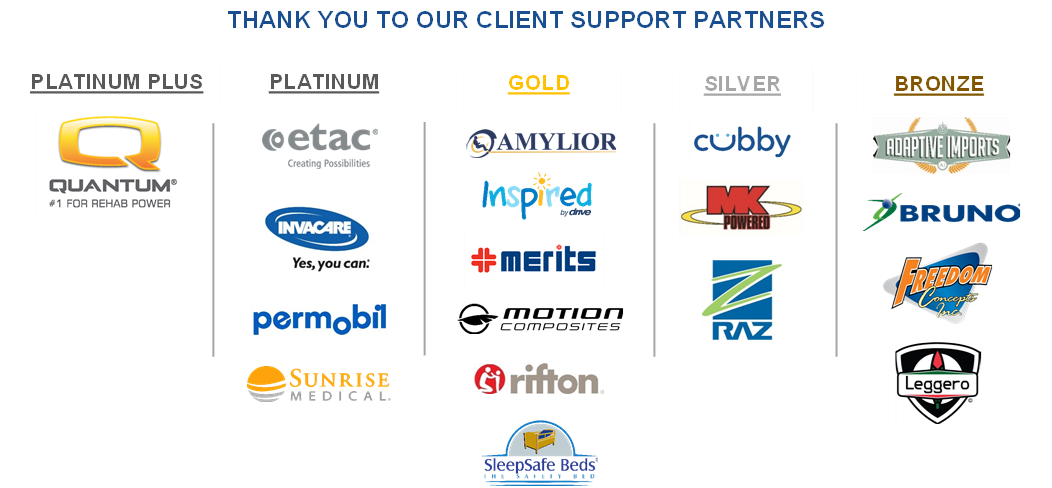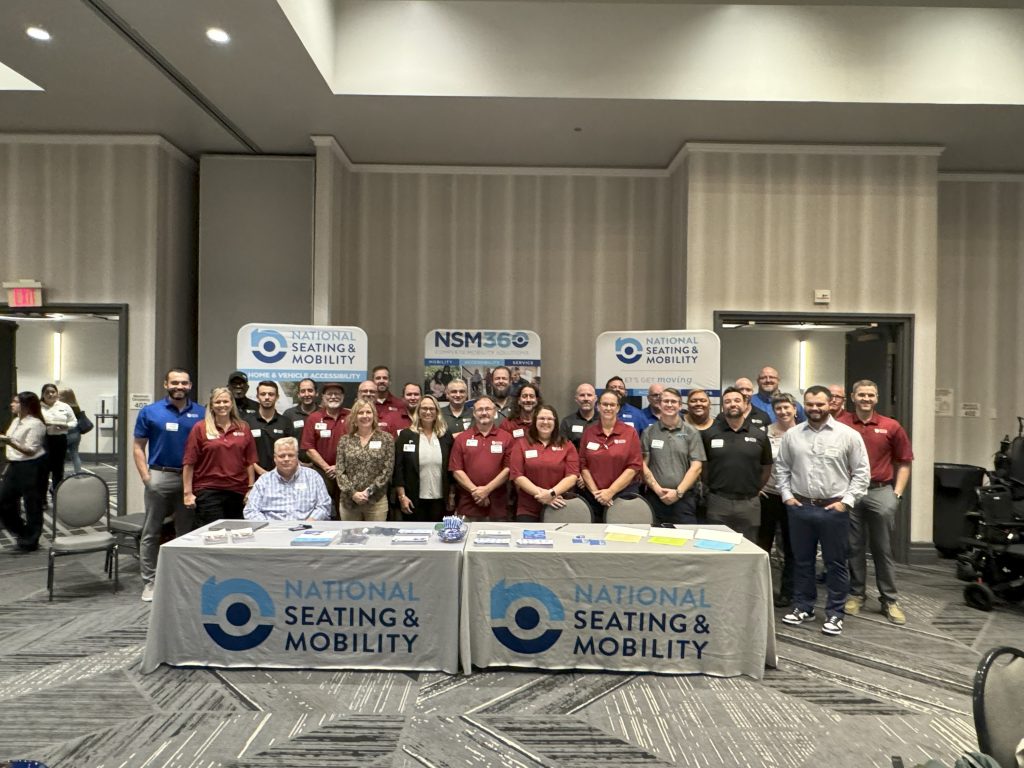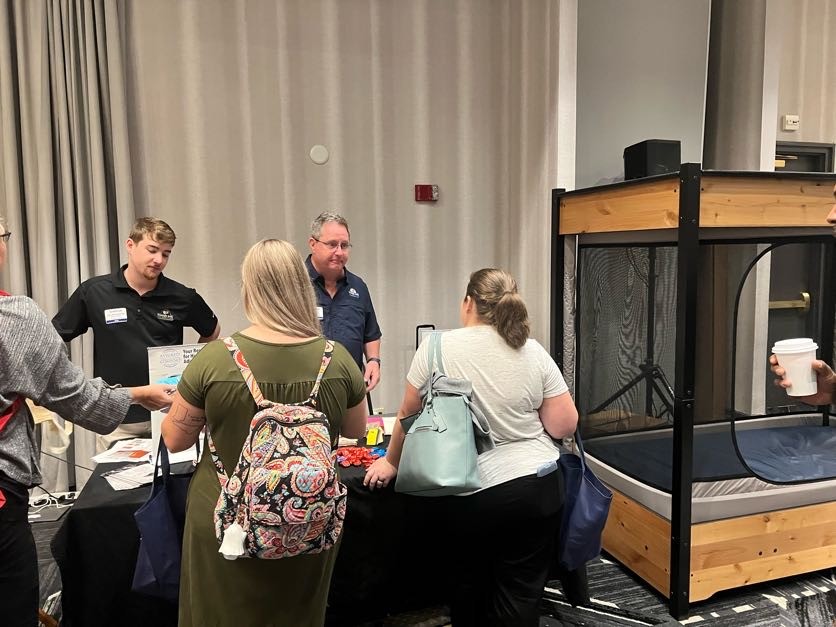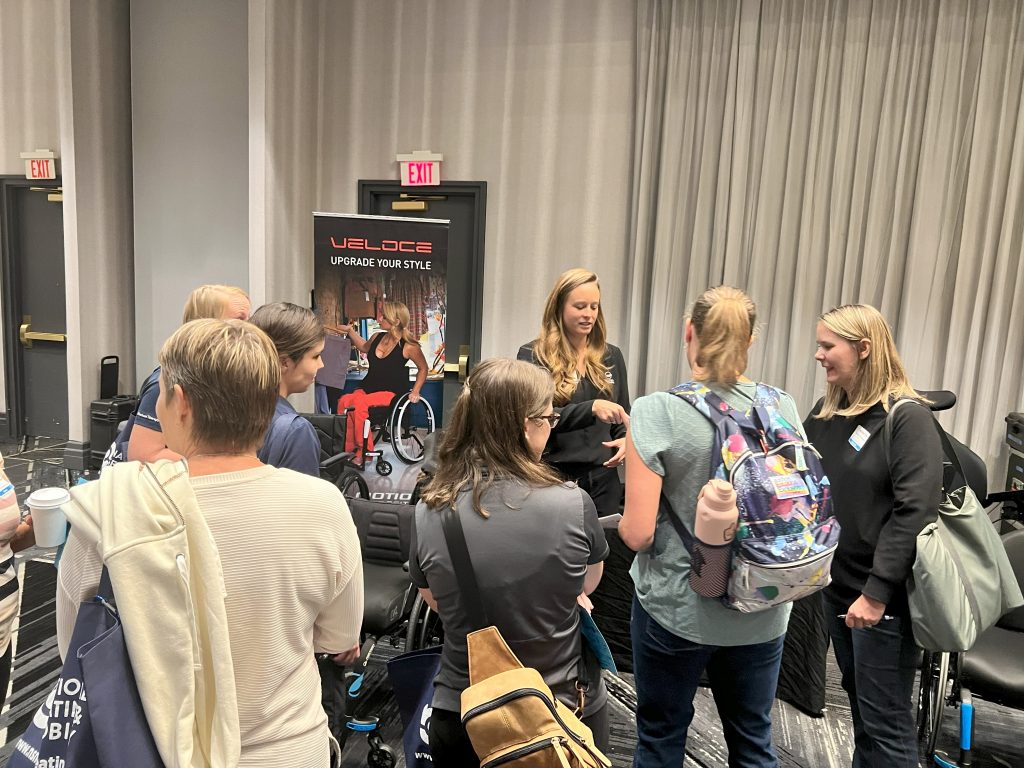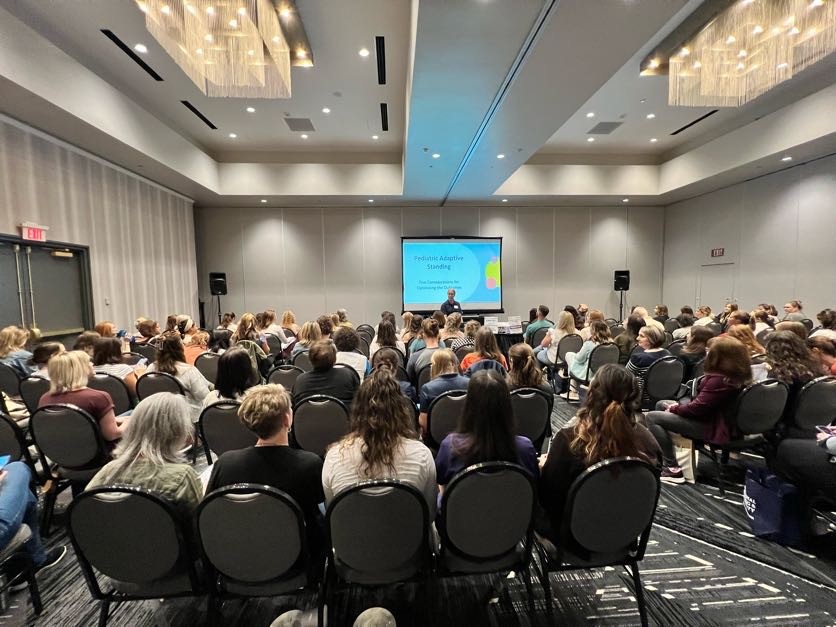CHARLOTTE MOMENTUM ACADEMY EDUCATION & TECHNOLOGY EXPO
Wednesday, October 1, 2025
Sheraton Charlotte Airport
Charlotte, NC
Event Highlights
- Earn up to 6 hours of continuing education (CE) credits for PT, PTA, OT, COTA, ATP
- Network with industry professionals
- Exhibit hall with the latest assistive technology
- Breakfast and lunch provided
The rate is: $69 for up to 6 CE credits
Sheraton Charlotte Airport

3315 Scott Futrell Dr, Charlotte, NC 28208
Deadline to reserve a room at $159 rate is Tuesday, September 9.
SCHEDULE OF EVENTS
7:00am - 7:45am: Registration
7:45am - 8:00am: Kick-off
8:00am - 12:00pm: Education Courses
12:00pm - 1:00pm: Lunch
1:00pm - 5:00pm: Education Courses
The Supplier Exhibit Hall will be open throughout
the day with 2 hours of dedicated exhibit hall time.
Click here for full event schedule.
Continuing Education Courses
Custom-Configured Seating - Designing Seating & Mobility for Growing Bodies
0.1 CEUs / Intermediate
Presented by: Lauren O'Rourke, PT, DPT, ATP, CPST
Etac/Ki Mobility
Custom-configured seating may be perceived by some as a challenging puzzle. With all the possible configurations and myriad shapes, components, and materials to select from or define, how does one determine what to do? Understanding the clinical decision-making as well as the purposes and capabilities of this seating technology can profoundly influence successful outcomes. It can be a challenge to get it right, but it is called complex rehab, after all.
In this presentation, we will briefly review the relevant components of a postural assessment. We will then discuss how to translate the findings from that assessment to specify and design the custom-configured seating system and accurately work our way through and complete the order form. Considerations will include providing an understanding of the variety of custom modifications, planning for growth or other changes, and ensuring an appropriate integration with a mobility base.
Tailored Seating Solutions for High-Risk Clients
0.1 CEU / Beginner
Presented by: Mary Anne Loftin, MSPT, ATP
Permobil
In the wheelchair seating arena, providing a seating system for the clients at high risk for pressure injury can be both intimidating and overwhelming. This 1-hr course provides an in-depth understanding of how to incorporate evaluation findings, seating characteristics, and client goals when formulating equipment recommendations for high-risk clients. Participants will learn to identify clinical indicators of pressure injury risk, apply ISO wheelchair cushion performance standards, and recognize key material traits in seating products. A complex case example will be discussed to illustrate the process of integrating evidence and client goals to enhance functional independence.
By the end of this course, participants will be equipped with the knowledge to make informed, evidence-based, and client-centered seating recommendations, ultimately improving the quality of life for wheelchair users.
Pediatric Wheelchair Cushions and Backs - Matching Technology and Needs
0.1 CEUs / Intermediate
Presented by: Lauren O'Rourke, PT, DPT, ATP, CPST
Etac/Ki Mobility
For many years, there were only a couple basic choices of primary supports for pediatric wheelchair users: custom configured or custom molded. The available options for primary supports, backrests and cushions, for the pediatric client have expanded considerably over the years, and today there are a number of off-the-shelf, out-of-the-package products available. This greater range of available products requires professionals to be more discerning regarding the variety of choices before them, and recognize which product accomplishes the objective in a clinically appropriate way. We know that children are not just a smaller version of the adult client and that their needs can be different. What does the research say about what is important for the pediatric client regarding providing postural support, addressing postural asymmetries, maintaining tissue integrity, facilitating function, etc. This presentation will explore the types of primary supports on the market, and seek to inform clinical practice by discussing considerations and applications of the various types of technology for primary supports for the pediatric wheelchair user.
Evidence-Driven MWC Configuration: Optimizing Fit and Function for Different Body Types and Propulsion Methods
0.1 CEU / Intermediate
Presented by: Mary Anne Loftin, MSPT, ATP
Permobil
This 1-hour course is designed to help providers and clinicians develop best practices for recommending complex rehab technology (CRT) manual wheelchairs for individuals with varying body proportions and propulsion styles. Using the ICF model, the course will guide participants through the decision-making process, balancing evidence with functional outcomes to ensure successful CRT seating and wheeled mobility solutions. Through case examples and clinical reasoning discussions, participants will learn to identify clients' individual clinical and functional goals, driving configuration and component recommendations that enhance functional mobility outcomes, participation, and overall satisfaction with the equipment, ensuring a good person-technology match.
Advancing Child Development: The Role of Gait Trainers in Mobility
0.1 CEU / Intermediate
Presented by: Erica Walling, MPT, ATP/SMS
Sunrise Medical
This one-hour course will be a recap of the typical gait development and its critical role in a child's brain and musculoskeletal growth. This course will delve into the numerous benefits of promoting early active mobility in children with additional needs, focusing on hip joint and muscle development. Participants will explore the evidence on gait trainers, evaluate the pros and cons of various styles, and learn about the innovative features and accessories of gait trainers. These tools can significantly enhance child exploration, interaction, and participation. Real-world case studies will illustrate the practical application of clinical theories using gait trainers.
Center of Gravity: Understanding the Functional Impact
0.1 CEU / Beginner
Presented by: Christie Hamstra, PT, DPT, ATP/SMS
Motion Composites
Define and examine center of gravity as it relates to manual wheelchair configuration. Review evidence related to configuration and optimal manual wheelchair performance.
Explore the impact of vertical and horizontal axle position changes on end user function, safety, and upper extremity health.
Power Assist and Power Add-on for Manual Wheelchairs: A Clinical Perspective
0.1 CEU / Intermediate
Presented by: Erica Walling, MPT, ATP/SMS
Sunrise
This course is designed for direct access therapists, suppliers, product representatives, and other seating and mobility professionals to enhance their knowledge and clinical application of the subject matter. Power assist and power add-on systems have rapidly evolved in recent years. They are commonly considered as a method of making a manual wheelchair a more functional option or as an alternative to a power wheelchair. This course focuses on rear, main-wheel, and front-wheel motor options as a power assist. Clinical indications for these technologies and objective measures useful to qualify the technology will be outlined. Funding criteria and justification for reimbursement will be provided. Functional use, training, set up, and care of the devices is also discussed.
Changes with Age: Giving You the Justification for Custom Manual Wheelchairs for the Geriatric Client
0.1 CEU / Intermediate
Presented by: Christie Hamstra, PT, DPT, ATP/SMS
Motion Composites
The geriatric client can be easily overlooked as one who could benefit from a custom fitting, ultralightweight, adjustable manual wheelchair. They are too often provided the “basic” wheelchair without much thought. This course with review normal physiological changes that come with aging, and how proper wheelchair seating, base selection, fitting, and set up, can be justified for the geriatric client.
3:00-4:00pm
The Drive for Function and Development: Alternative Drive Control Considerations for Early Power Mobility
0.1 CEU / Beginner
Presented by: Jay Doherty, OTR, ATP/SMS
Quantum Rehab
Assessing an end user for power mobility can be an intimidating task. Decisions that are made will have an impact on the individual’s quality life, functional mobility, physical well-being, and social interactions. This task can seem even more daunting when it comes to the pediatric end user. Children have the natural desire to move, explore, and learn. Research has shown that there is a strong correlation between self-initiated mobility and the development of visual, cognitive, social, language, and perceptual skills. This course will discuss the characteristics and decision-making process for alternative drive control devices, as well as the special considerations on early power mobility intervention. Potential assessment and training tools for pediatric power mobility will also be explored.
4:00-5:00pm
Clinically Speaking: The Power of Prevention
0.1 CEU / Beginner
Presented by: Jay Doherty, OTR, ATP/SMS
Quantum Rehab
Individuals with chronic medical conditions and long-term disabilities who have a permanent need for a wheelchair require a comprehensive, detailed evaluation of their physical, functional and environmental needs to allow clinicians and ATP suppliers to make appropriate Assistive Technology recommendations for a successful outcome.
This course will examine the clinical decision-making process and algorithmic approach to mobility assistive equipment trial and recommendation. This course will also serve as a review of preventative therapeutic use of powered seating features that allow end user increased independence not only in daily activities but also in the importance of medical management when caregiver and therapy resources may be limited. The use of powered features will be reviewed in regard to management of frequent co-morbidities and medical conditions such as: orthostatic hypotension, edema, contracture/tone management, pressure injury prevention, and the application of positioning components that can aid in decreased the complications of skeletal deformities over time. Many times, end users may be overlooked for their potential of meeting power wheelchair criteria that could provide them increased functional independence and control within their environments and to help be a part of preventing further medical complications. It is known that over 60,000 people in the United States die each year form pressure injuries alone and we know that utilization of pressure re-distribution for those lacking sensation and independent mobility can reduce this by giving the user control of their repositioning.
3:00-5:00pm
"COMPLEX" - Positioning Complex Bodies to Support Activities and Access Throughout the Lifespan
0.2 CEU / Intermediate
Presented by: Byron Guisbert
Invacare/ASL
This course will identify how balanced seating impacts function and participation. Discuss ways in which power mobility is used as treatment. Discuss positioning techniques that encourage self-initiated movement to interface with various access technologies through fun, meaningful activities.
Explore the course offerings. You can pick & choose the classes you'd like to attend during registration.
